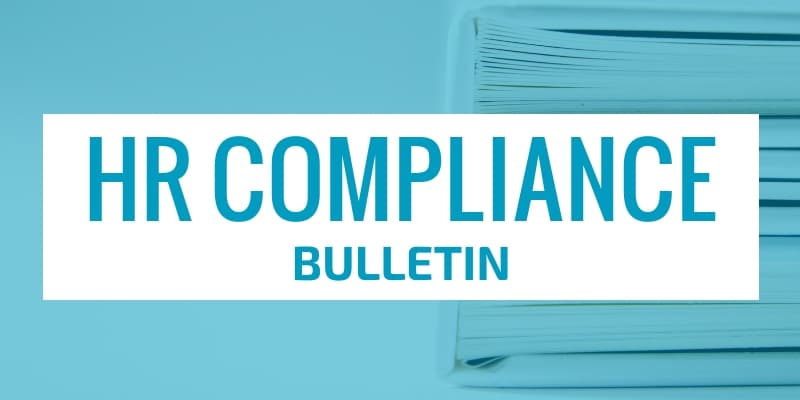 On Sept. 2, 2020, the Department of the Treasury (Treasury Department) and the Internal Revenue Service (IRS) released Notice 2020-68, which provides guidance on certain provisions of the Setting Every Community Up for Retirement Enhancement Act of 2019 (SECURE Act).
On Sept. 2, 2020, the Department of the Treasury (Treasury Department) and the Internal Revenue Service (IRS) released Notice 2020-68, which provides guidance on certain provisions of the Setting Every Community Up for Retirement Enhancement Act of 2019 (SECURE Act).
Key SECURE Act provisions addressed by the notice include:
- The small employer automatic enrollment credit (Section 105);
- The repeal of the maximum age for traditional Individual Retirement Account (IRA) contributions (Section 107);
- Participation of long-term, part-time employees in 401(k) plans (Section 112); and
- Qualified birth or adoption distributions (Section 113);
The notice also provides guidance on deadlines for plan amendments.
Action Steps
Plan administrators should review this initial guidance and determine which types of plan amendments are necessary.
- In general, the deadline to amend a plan for SECURE Act provisions is the last day of the first plan year beginning on or after Jan. 1, 2022.
- The plan amendment deadline for a qualified governmental plan, or for an applicable collectively bargained plan, is the last day of the first plan year beginning on or after Jan. 1, 2024.
The Treasury Department and the IRS anticipate issuing further guidance, and have requested comments and suggestions about the matters addressed in the notice.
 Highlights
Highlights
Q&A Format
The notice is not intended to provide comprehensive guidance, but rather to assist in the implementation of certain SECURE Act provisions by providing guidance on particular issues in the form of questions and answers.
Further Guidance Expected
The Treasury Department and the IRS continue to analyze the various provisions of the SECURE Act, and anticipate issuing further guidance, including regulations, as appropriate.
Important Dates
Nov. 2, 2020
Comments on the topics addressed in the notice should be submitted on or before Nov. 2, 2020.
Jan. 1, 2022
Most plans (except for certain governmental plans or collectively bargained plans) must make amendments by the last day of the first plan year beginning on or after Jan. 1, 2022.
Small Employer Automatic Enrollment Credit
Section 105 of the SECURE Act provides a business credit for eligible employers that establish an eligible automatic contribution arrangement (EACA) under a qualified employer plan.
These terms are generally defined as follows:
- An eligible employer is one that has no more than 100 employees who received at least $5,000 in compensation from the employer for the preceding year.
- An EACA requires the plan to include a cash or deferred arrangement under which participants are treated as having made an election to contribute at a uniform percentage of compensation, and that also satisfies certain notice requirements.
- Qualified employer plans include 401(a) plans, 403(a) plans, SEPs, and SIMPLE retirement accounts, but do not include certain governmental plans or plans maintained by tax-exempt employers.
The credit is equal to $500 for each taxable year during a three-year credit period (beginning with the first taxable year for which an eligible employer includes an EACA in a qualified employer plan that is sponsored). The new credit applies to taxable years beginning after Dec. 31, 2019.
Implementation Guidance
IRS Notice 2020-68 provides the following implementation guidance on the credit:
- Eligible employers may not receive a credit with respect to taxable years in more than one three-year credit period.
- Eligible employers must include the same EACA in the same plan in the second or third taxable year to be eligible for the credit during the three-year credit period.
- The credit applies separately to each eligible employer that participates in a multiple employer plan.
Repeal of Maximum Age for Traditional IRA Contributions
Section 107 of the SECURE Act repeals the prohibition on making contributions to individual traditional IRAs if the individual has attained age 70 ½. Accordingly, for contributions made after Dec. 31, 2019, individuals can contribute to traditional IRAs regardless of their age.
IRS Notice 2020-68 clarifies that a financial institution is not required to accept post-age 70 ½ contributions, but may choose to do so beginning after Dec. 31, 2019. If a financial institution chooses to accept post-age 70 ½ contributions, it must:
- Amend its IRA contracts to provide for those contributions; and
- Distribute a copy of the amendment and a new disclosure to each benefited individual.
Participation of Long-Term, Part-Time Employees in 401(k) Plans Section 112 of the SECURE Act allows employees that have completed at least 500 hours of service during three consecutive 12-month periods and have attained the age of 21 to become eligible to participate in a 401(k) plan. It also provides special vesting rules for these long-term, part-time employees, and modifies the break-in-service rules for these employees.
Section 112 of the SECURE Act applies to plan years beginning after Dec. 31, 2020, except that, for purposes of determining a long-term, part-time employee’s eligibility to participate, 12-month periods beginning before Jan. 1, 2021, are not taken into account. However, the guidance clarifies that 12-month periods beginning before Jan. 1, 2021 are not excluded for purposes of determining a long-term, part-time employee’s nonforfeitable right to employer contributions.
Qualified Birth or Adoption Distributions
The Internal Revenue Code (Code) generally imposes a 10% additional tax on early distributions from qualified retirement plans (including an IRA or Roth IRA), unless the distribution qualifies for an exception. Section 113 of the SECURE Act adds a new exception for any qualified birth or adoption distribution.
A qualified birth or adoption distribution is defined as any distribution of up to $5,000 from an applicable eligible retirement plan (i.e., a § 401(a) defined contribution plan, a § 403(a) annuity plan, a § 403(b) annuity contract, a governmental § 457(b) plan, or an IRA) to an individual, if made during the one-year period beginning on the date the child is born or the legal adoption is finalized.
Implementation Guidance
IRS Notice 2020-68 includes the following key guidance for plans permitting qualified birth or adoption distributions:
- A plan sponsor or plan administrator may rely on a reasonable representation from an individual that he or she is eligible for a qualified birth or adoption distribution.
- If a plan permits qualified birth or adoption distributions, the plan is required to accept a recontribution of that distribution to that plan.
- Plans are not required to offer individuals a direct rollover with respect to a qualified birth or adoption distribution, nor are they required to provide a notice under Code § 402(f).
- Plan administrators of qualified birth or adoption distributions are not required to withhold an amount equal to 20% of the distribution, but they are subject to the voluntary withholding requirements of the Code.
Additional Topics
The guidance also addresses difficulty of care payments being taken into account as compensation in determining certain retirement contribution limitations, as well as issues under the Bipartisan American Miners Act of 2019 (which reduces the minimum age for in-service distributions).
Plan Amendments
In general, a plan amendment made pursuant to a provision of the SECURE Act—whether it is required or discretionary— must be adopted by the last day of the first plan year beginning on or after Jan. 1, 2022. For applicable collectively bargained plans (generally those maintained pursuant to agreements ratified before Dec. 20, 2019) or governmental plans, the deadline is the last day of the first plan year beginning on or after Jan. 1, 2024. The amendment must apply retroactively to the effective date of the SECURE Act provision.
Source: The Department of the Treasury and the Internal Revenue Service
This Compliance Bulletin is not intended to be exhaustive nor should any discussion or opinions be construed as legal advice. Readers should contact legal counsel for legal advice. ©2020 Zywave, Inc. All rights reserved.

